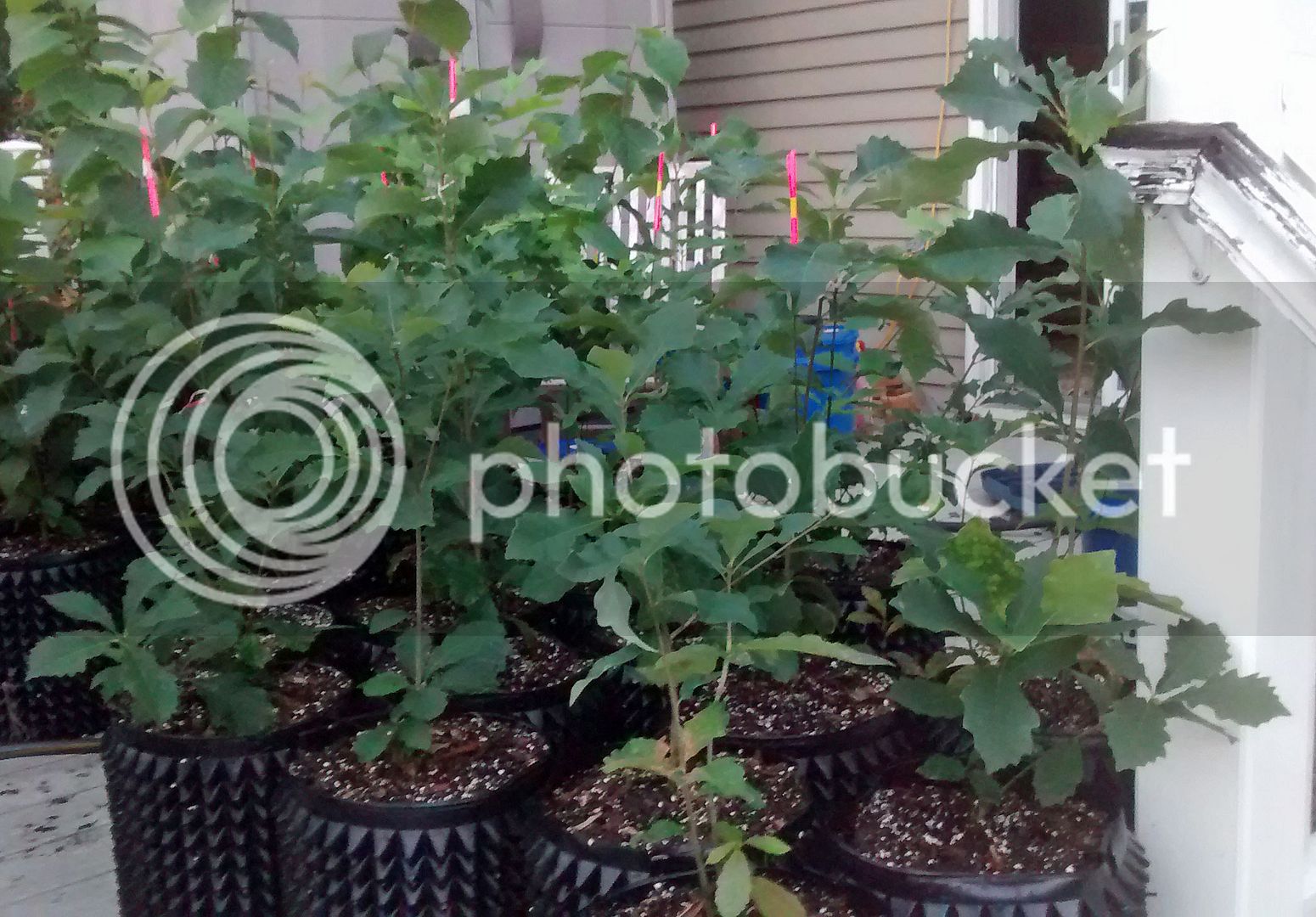Every nut that germinated grew. I can't recall what my germination rate was, but it would be the same regardless of method. A guy on one of the fruit tree forums bought DCO nuts to grow. He ended up with more nuts than he could use and sold me his leftovers. I only started with a few nuts. I can't recall, but I think it was around 30 or so. You may be able to dig it up on one of my old threads.
I don't at all disagree with you that direct seeding is a viable alternative. Both methods have advantages and disadvantages. Direct seeding gives you a full tap root which may be beneficial in some climates verses root pruning. I think a root pruning container system is the best way to go if you want to go with containers, but direct seeding has no issues with circling or j-hooking and no transplant shock. It can work out well, but it also has disadvantages. In nature, there are tens of thousands of nuts (or perhaps even more) for every quality tree that grows and produces. You can stack the odds in your favor a bit by planting the nut at the proper depth and protecting it, but there is not much room for culling.
When I grow indoors, I find that some nuts just don't produce vigorous trees. There is no difference in care from the nut next to it that really takes off and grows great. Some trees are just winners. Others are duds. In nature, the duds are culled because they can't compete. When we direct seed, we remove that competition to boost our tree growth, but if the tree is a dud it lives with our help but never flourishes. Growing indoors allows me to start with many more nuts. I can cull as I see fit based on seedling growth and performance.
There is no doubt growing indoors under lights has high setup and time costs. The setup cost can be amortized over many years. My cost per tree is now quite low, however, I've been doing this for a number of years and will continue for at least several more years. The real issue is time. For me it is a cure for cabin fever and I enjoy it as a hobby, so I count my time as a labor of love. There is a lot of satisfaction in it. For a guy just wanting a few trees for attraction, direct seeding or just buying bare root trees may be a better bet.
Another consideration is your soils. In my case, with poor soil, growth is very slow. I've direct seeded trees and they are dwarfed by my rootmaker trees. That may not be the case in an area with fertile soils. Starting trees indoors may have less benefit in areas with longer growing seasons. I know matt in Tx likes using root pruning containers but waits and starts his trees outdoors. He has a much longer growing season than I do in 7A. Most trees do need a rest, so you can only extend that growing season so long. I'm still working on finding the optimal formula for my area.
I'm not arguing that growing indoors with Rootmakers is better than direct seeding for everyone. Both methods have advantages and disadvantages and folks need to figure out what works best with their objectives and situation. I'm simply saying that there is nothing that I've found with DCO that makes them not respond well to the rootmaker container system.
I will caveat this with the fact that this is my first attempt with DCOs and have not seen them in the field a few years down the road. I do have chestnuts that have been growing in the field for a number of years now. They do slow significantly when they are transplanted into my native soils, but the direct seeded chestnuts are not close to catching up. I'll keep reporting back on the DCOs and let folks know how they perform after a few years in the field.
Thanks,
Jack
